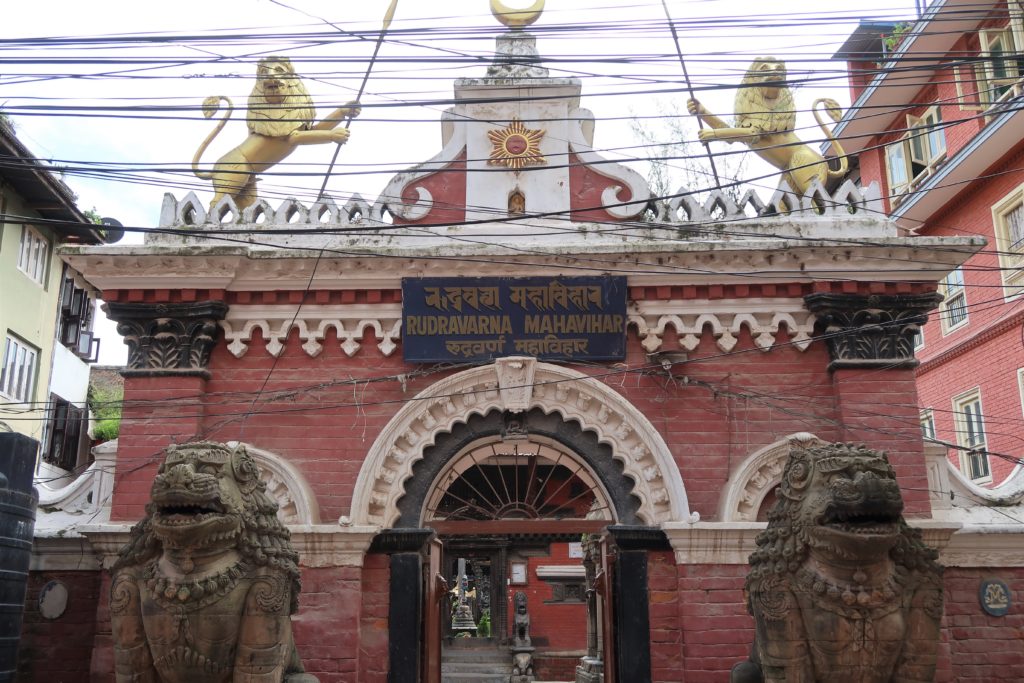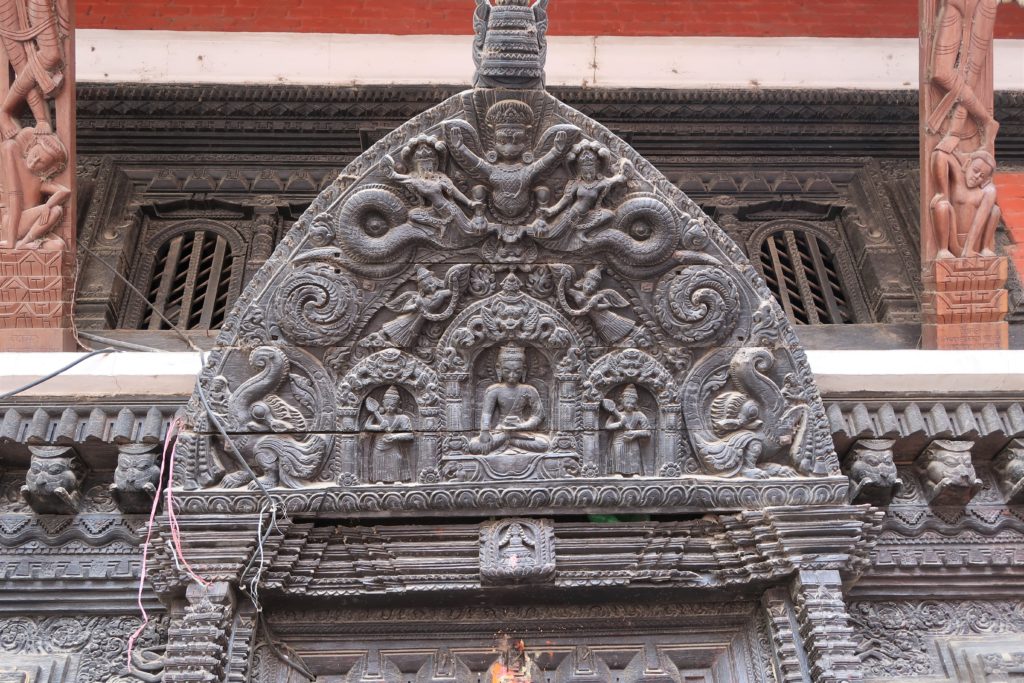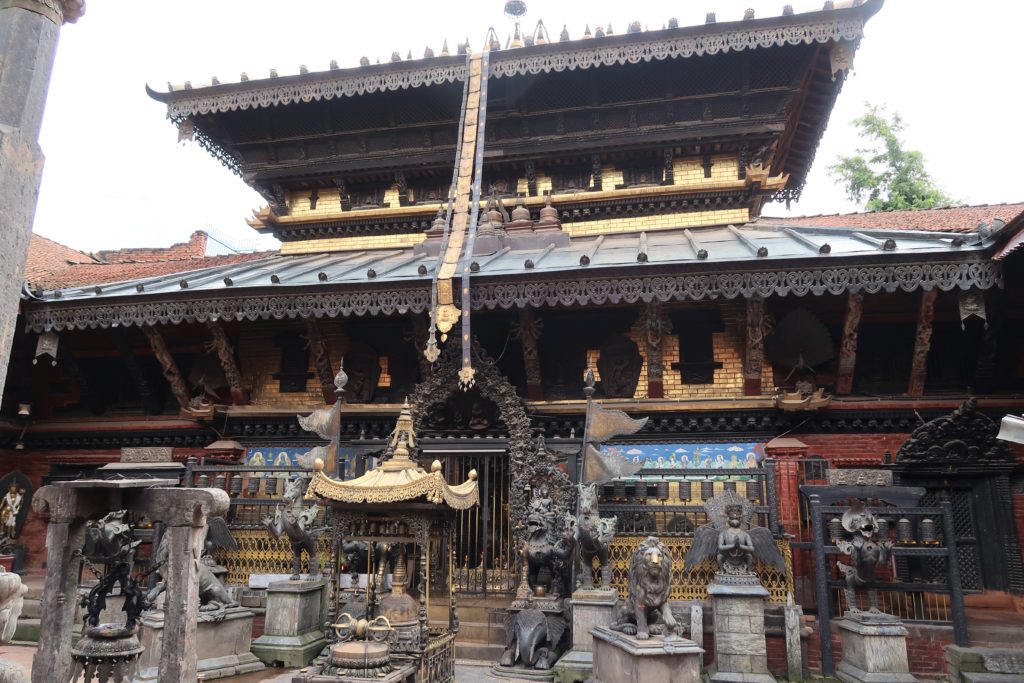パタン Patan の散策、Mahabuddha Temple マハブッダ寺院の次は、Rudravarna Mahavihar ルドラヴァルナ大僧院を訪れました。 ECS NEPAL の「Rudravarna Mahavihar A Precious Heritage 」の記事によると、Kathmandu Valley の中で、Hiranayavarna Mahavihar (the Golden Temple) に次ぐ重要な vihar 僧院の様です。
ECS NEPAL の「Rudravarna Mahavihar A Precious Heritage 」の記事によると、Kathmandu Valley の中で、Hiranayavarna Mahavihar (the Golden Temple) に次ぐ重要な vihar 僧院の様です。
Kathmandu Valley is estimated to have more than 2,500 temples of different styles, the most prevalent being the pagoda type. Rudravarna Mahavihar is one of the most beautiful of such pagoda style temples. According to those who know, Rudravarna Mahavihar in Okubahal, Lalitpur, is the second most important vihar in Kathmandu Valley, next only to Hiranayavarna Mahavihar, also known as the Golden Temple, in Kwabahal of Lalitpur. The two mahavihars share many similarities, both being three-roofed pagoda-style temples housing huge statues of Shakyamuni Buddha. However, there are differences as well. There are more devotional activities in Hiranayavarna Mahavihar than in Rudravarna Mahavihar, and the former certainly has a livelier environment, especuially in the early hours of the morning, when many devotees come to pray and worship. On the other hand, Rudravarna Mahavihar is said to be the best-maintained vihar in the valley, and is spic-and-span at all hours. Anyway, however one looks at it, it is a fantastic example of Newari Buddhist culture, artchitecture, and art.
神仏が彫られたトーラナ Torana です。 確かに the Golden Temple よりも参拝者が少なく静かな境内は、ゆっくりとした時間が流れています。
確かに the Golden Temple よりも参拝者が少なく静かな境内は、ゆっくりとした時間が流れています。
 ECS NEPAL の「Alleys Full of Art」の記事によると an idol of ‘Kwapadhya’, the Shakyamuni Buddhaが祀られ、その赤い顔が特徴とありましたが、ガラスの向こうで、しっかりと拝見することが出来ませんでした。
ECS NEPAL の「Alleys Full of Art」の記事によると an idol of ‘Kwapadhya’, the Shakyamuni Buddhaが祀られ、その赤い顔が特徴とありましたが、ガラスの向こうで、しっかりと拝見することが出来ませんでした。
Located a mere 500 meters from the Patan Durbar Square, it is one of the oldest monasteries of Patan. It was built in the 6th century AD by the Licchavi king, Shiva Deva. In the past, the monastery also had a community of artisans that were specifically settled nearby to promote the growth of the various forms of art. The monastery has two courtyards, the larger of which is filled with stone and metal statues. The main shrine, which is three-stories high, houses an idol of ‘Kwapadhya’, the Shakyamuni Buddha. This statue is unique for its red face, which adds to the aura created by its intricate ornaments and the skillful metalwork surrounding it.

